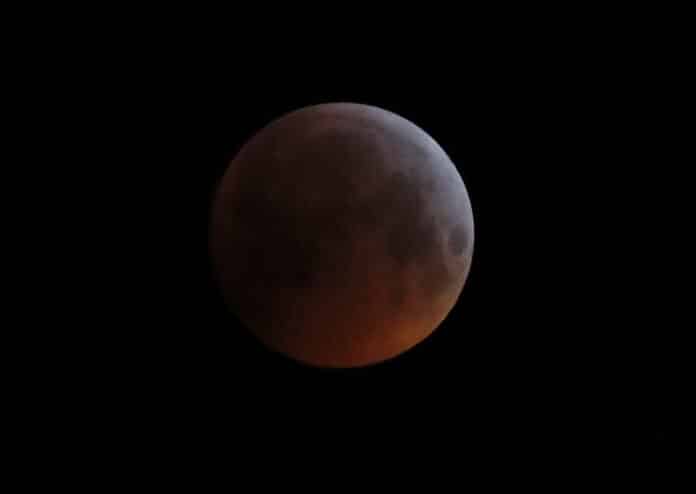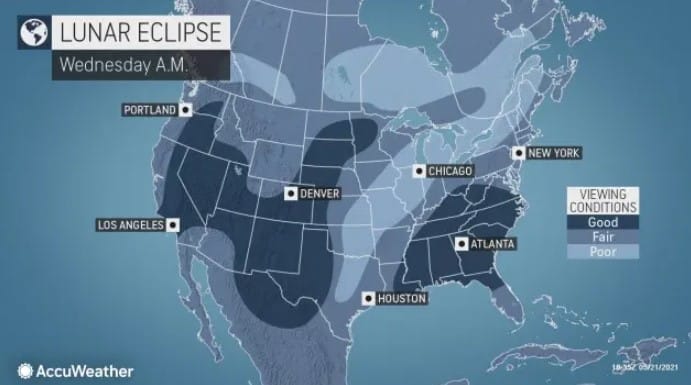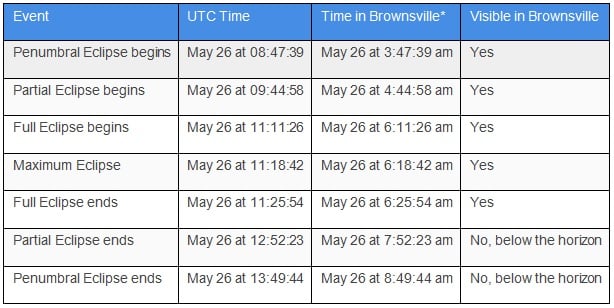
HARLINGEN — Call it a blood moon, or a wolf moon, or to be more precise, a Super Flower Blood Moon.
Whatever you name it, the relatively rare full lunar eclipse will occur early Wednesday morning, and it should be visible from the Rio Grande Valley, cloud cover permitting.
The lunar eclipse this Wednesday takes place just a few hours after the moon reaches perigee, the closest point to Earth on its orbit, making it a Super Flower Blood Moon. The flower reference refers to an eclipse which comes in May, paralleling the emergence of spring flowers.
“The center of the eclipse is over the South Pacific, but we’re still west enough to be able to see a good portion of it because we’re off at an angle,” said Richard Camuccio, director of science and astronomy with the South Texas Astronomical Society. “What you’re going to basically see is the moon slowly turn a dark reddish color and that peak occurs, maximum eclipse occurs, a quarter after six in the morning.
“So starting around three or 4 a.m., and until that time, you’re going to slowly see the moon take on deeper shades of red,” he added. “And it’s going to come from an angle from the side, so you’re going to see it slowly expand from one rim of the moon until it’s completely covered.”
Just why the moon turns red during a lunar eclipse is a phenomenon of light passing through the Earth’s atmosphere and striking the moon’s surface, said Victor De Los Santos, executive director of the South Texas Astronomical Society.
“The reason the total lunar eclipse is really interesting is because the light we see from the moon is from the sun, but when the earth gets in between, then the light that we see on the moon it gets interference from the Earth’s atmosphere,” De Los Santos said. “It doesn’t completely block out the moon, but that light first passes through the earth’s atmosphere and so because of the interaction between the sun’s rays and the earth’s atmosphere, it turns red.
“You know how you see a sunset you see more reddish-orange colors? That’s something called Rayleigh scattering, and it’s the effect of basically you looking through the Earth’s atmosphere to see the sun,” he added. “The same effect happens on the moon. The sun’s rays will pass through the earth’s atmosphere and onto the moon.”

This will mark the first lunar eclipse of the decade, with the last one occurring on Jan. 21, 2019. A partial lunar eclipse is scheduled for Nov. 19, according to astronomers.
“Lunar eclipses are actually pretty common,” Camuccio said. “Even solar eclipses, which are less common, they happen more often than you think just because they happen a lot over the ocean. Like this one, for instance, is happening dead-center in the Pacific.”




